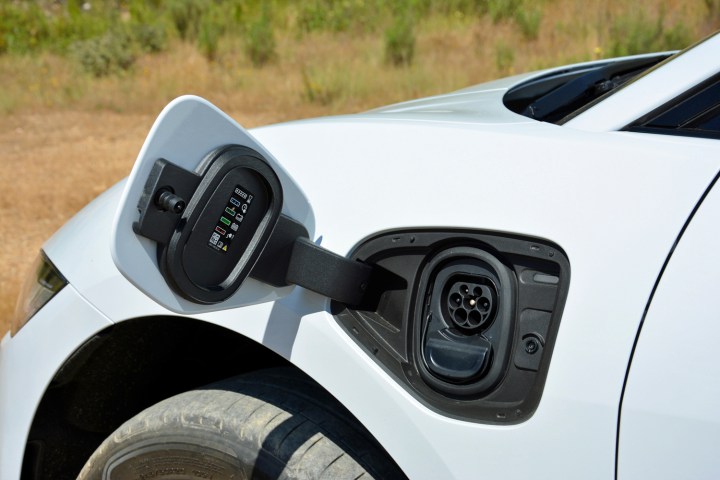If your car could talk, or at least send you a text message, it would ask you what’s going on right now. What happened to the good ol’ days when you used to commute daily? Fill it with fresh gas? Leave the driveway at all?
While society as a whole is feeling the effects of government-mandated lockdowns enforced to slow the spread of the coronavirus, cars suffer from staying put for too long. The men and women who developed your daily driver — whether it’s electric, V8-powered, bargain-priced, or ultra-expensive — didn’t factor prolonged confinement periods into the engineering process. The best way to keep a car in good shape is to keep it moving.
There is absolutely no need to panic or to envision drastic measures. Don’t build an airtight, temperature-controlled bunker for your Isuzu Trooper. But there are basic steps you should take to ensure whatever you drive starts, accelerates, and stops as it should when the lockdown period finally ends. I’ve listed them here, and busted a few myths floating around the internet along the way. Take it from me — I regularly de-mummify cars that have been sitting for far too long (decades, sometimes), so I have a good grasp on what goes wrong when a vehicle doesn’t move.
Start it (or drive it)

Your car is designed to be driven on a regular basis, and every mechanical component suffers if it stays idle for too long. I recommend starting the engine at least once every two weeks and letting it run until it reaches operating temperature. Do this outside; you don’t want to fill your garage with exhaust fumes. Better yet, go for a drive if possible, even if it’s just a trip to the store for essential supplies or a run to a nearby restaurant for takeout.
Monitor your battery

There is little need to worry about your car’s battery if it’s relatively new, and if the charging system is in good condition. Your car will still start right up even if it’s been sitting untouched for over a month. An older battery may not last as long, and a small drain can completely sap it over time. I suggest using a multimeter to check whether the voltage is dropping. It’s easy to do, takes just a few minutes, and requires no car-specific knowledge.
If the multimeter shows about 12.6 volts after the car has been sitting for at least an hour, your battery is healthy. Check again two or three days later. If the voltage has dropped significantly, you’re headed for trouble. In this case, it’s wise to invest in a trickle charger to keep it topped up. You’ll need to diagnose the problem sooner or later.
My test subject pictured above is low at 12.10 volts. It’s a six-year old battery — go figure.
Keep an eye on your tires

Check the pressure in each one of your car’s tires (don’t forget the spare!), and top them up if necessary. Tires lose air over time, but there’s no need to exceed the manufacturer-recommended pressure unless you’re not planning on driving at all for several months. Driving on a semiregular basis will help ensure your tires don’t develop flat spots, and it’s a good idea to move your car (even by a few feet) every now and then if you only take it out every few weeks.
Don’t bother with fuel stabilizer

Let’s dispel a myth: Most motorists don’t need to pour stabilizer in their fuel tank. These products are generally designed for cars going into long-term storage, like a sporty convertible being kept indoors during the winter months. It’s going to take more than a couple of weeks for the gasoline in your tank to go completely bad, especially if you drive on a semiregular basis, and diesel lasts even longer. Don’t bother draining the fuel tank, either.
Keep your EV charged

If your car is electric, you obviously don’t have to worry about what’s in the fuel tank, but you do need to take simple measures to keep your battery healthy. The pack loses electricity over time, even when the car is not being used, so you’ll end up with a brick (and not the fun Lego kind) if you don’t keep it charged. Keep the battery’s charge between 50 percent and 70 percent at all times. Some electric cars let owners dial in a charging limit, so they can set it and forget it. If yours doesn’t have this feature, keep an eye on the charging level by looking at the dashboard or the app.
Charging to 100 percent isn’t recommended. And there’s no need to zap the pack with a quick charger in this case.
Don’t use the parking brake

Don’t engage the parking brake if you know you’re not going to drive for a few weeks, because corrosion could seize the system’s moving parts over time and make disengaging it a real nightmare. The risks of this happening are much higher if your car is an older model, or if you live in a particularly humid climate. Leave the transmission in park if it’s an automatic; engage first or reverse if it’s a stick. Note that this tip only applies to motorists who park on a relatively flat surface. If your car needs the parking brake to stay put, please use it regardless of when you’ll drive it next; your neighbor’s mailbox will thank you.
Editors' Recommendations
- Your car insurance company knows more about you than you think
- Volkswagen is launching its own self-driving car testing program in the U.S.
- LG Display’s ‘invisible’ speaker brings sound to any surface in your car
- The next generation of Apple CarPlay will power your entire car, riding the trend of all-screen autos
- Officers confused as they pull over an empty self-driving car




